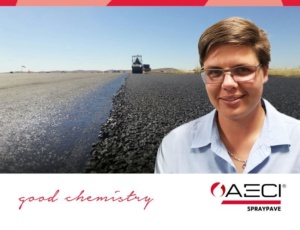The advantages of using ground tyre rubber (GTR) in asphalt include a more flexible pavement with increased fatigue resistance and reduced ageing of the binder.
AECI Much Asphalt has supplied several road projects with asphalt mixes containing GTR in the past year, notably in Emalahleni, Mpumalanga, and the Western Cape.
Joanne Muller, Manager of AECI Much Asphalt’s Gauteng Regional Laboratory, explains that the use of ground tyre rubber enables the use of more binder in the asphalt without risk of bleeding or excessive deformation due to increased binder and subsequently mix viscosity. Increasing the amount of binder, together with the elastic properties of the binder and the crumbs themselves, provides longer lifespans for roads and lower rolling noise on the asphalt surface.
“The wet process of using GTR in asphalt typically would have between 18 and 22% of GTR in the binder, which in turn typically constitutes between 5.5 and 7% of the mix,” says Muller. While this doesn’t seem like much, the quantity of rubber tyre used in a mix increases exponentially with the large quantities of asphalt produced for major road surfacing projects.
She explains that the production of hot mix asphalt with GTR requires production of the binder on site at the asphalt plant as its use is time sensitive. Digestion tanks and blenders are required, as well as feeder pumps and header tank to supply the binder into the asphalt plant.
But for warm mix asphalt, the binder does not have to be mixed on site and can be hauled to the asphalt production plant and utilised without the need for additional equipment. Warm mix asphalt has the added advantage of a lower energy requirement in the manufacturing process and less environmental and social impact.
#environmentalresponsibility #recycling #aecispraypave

